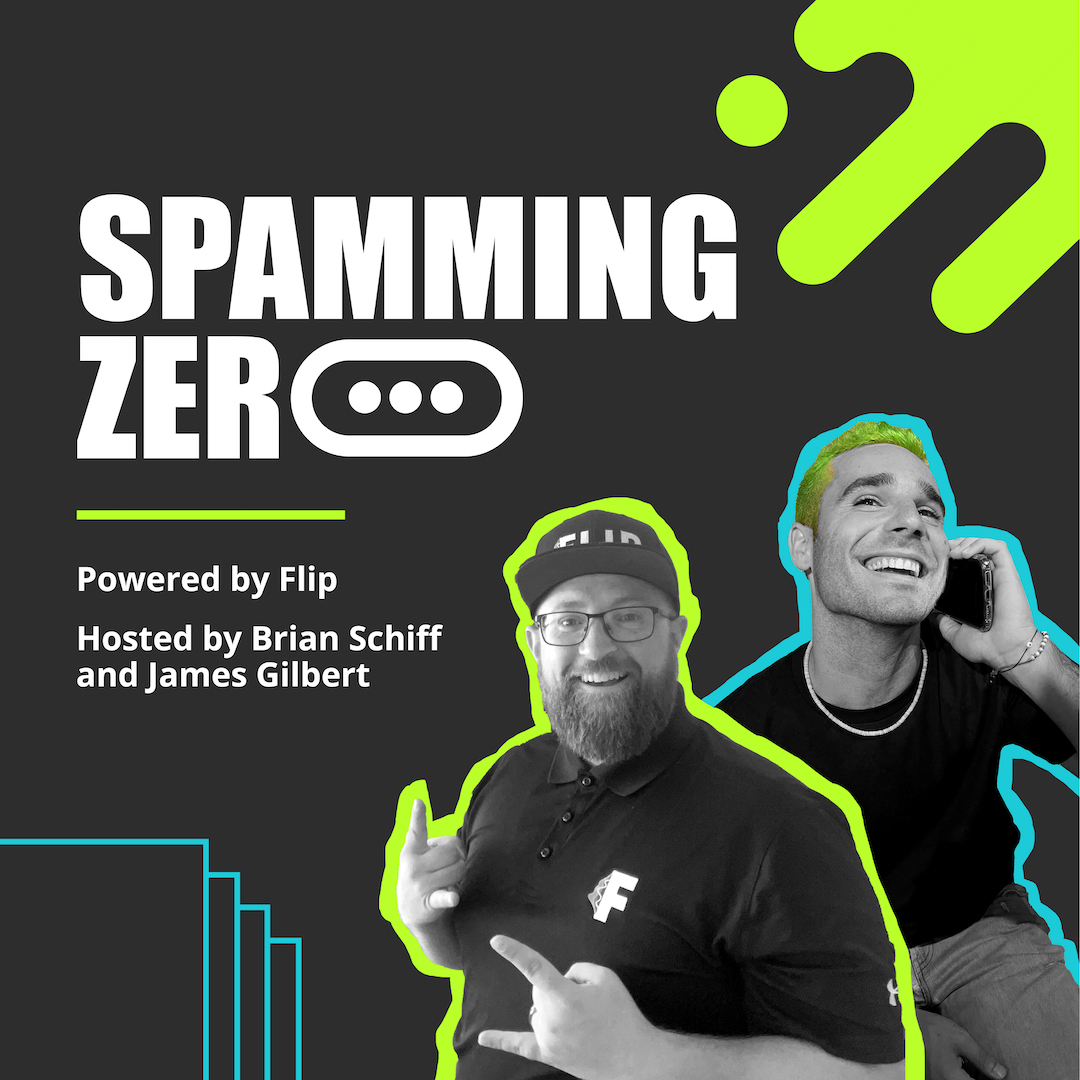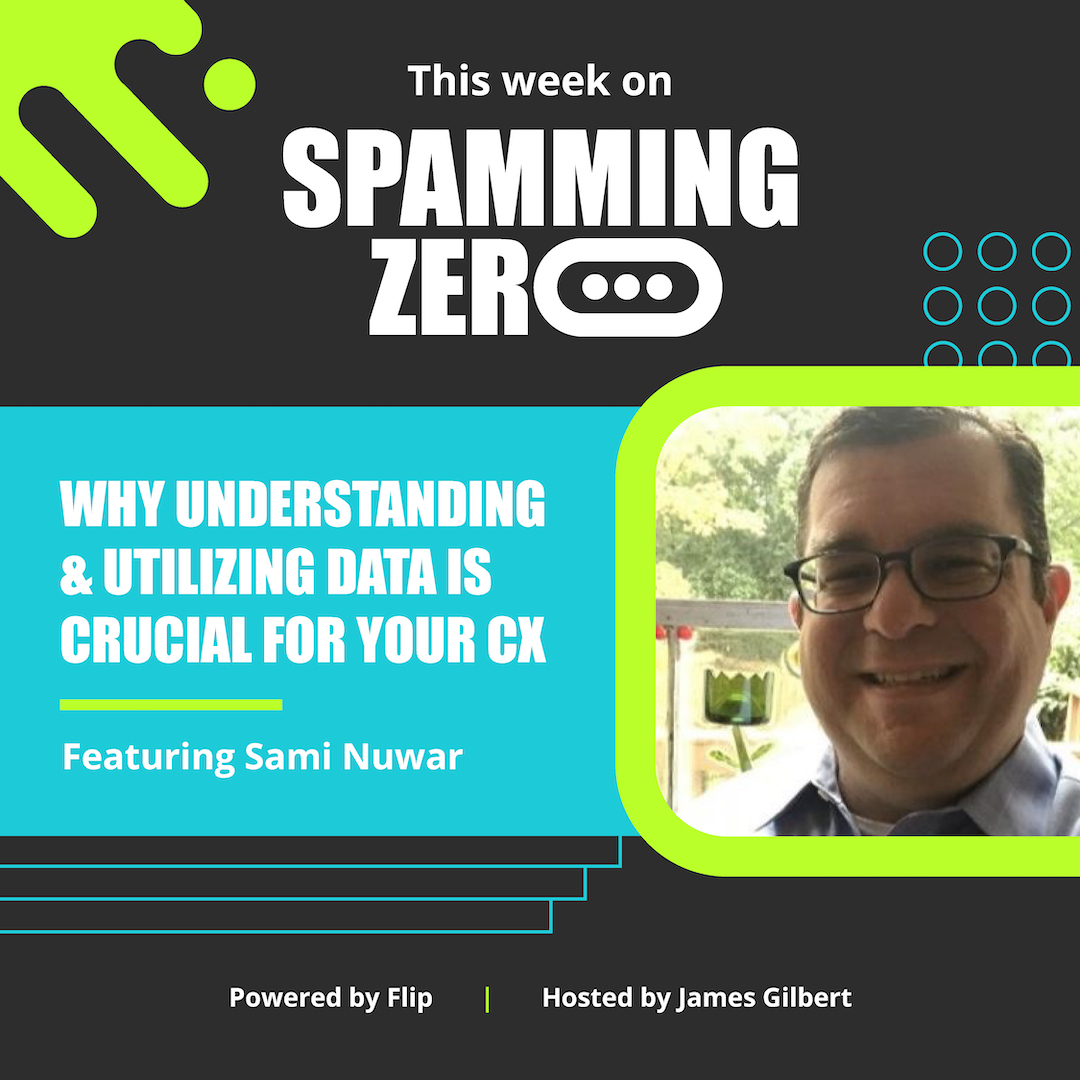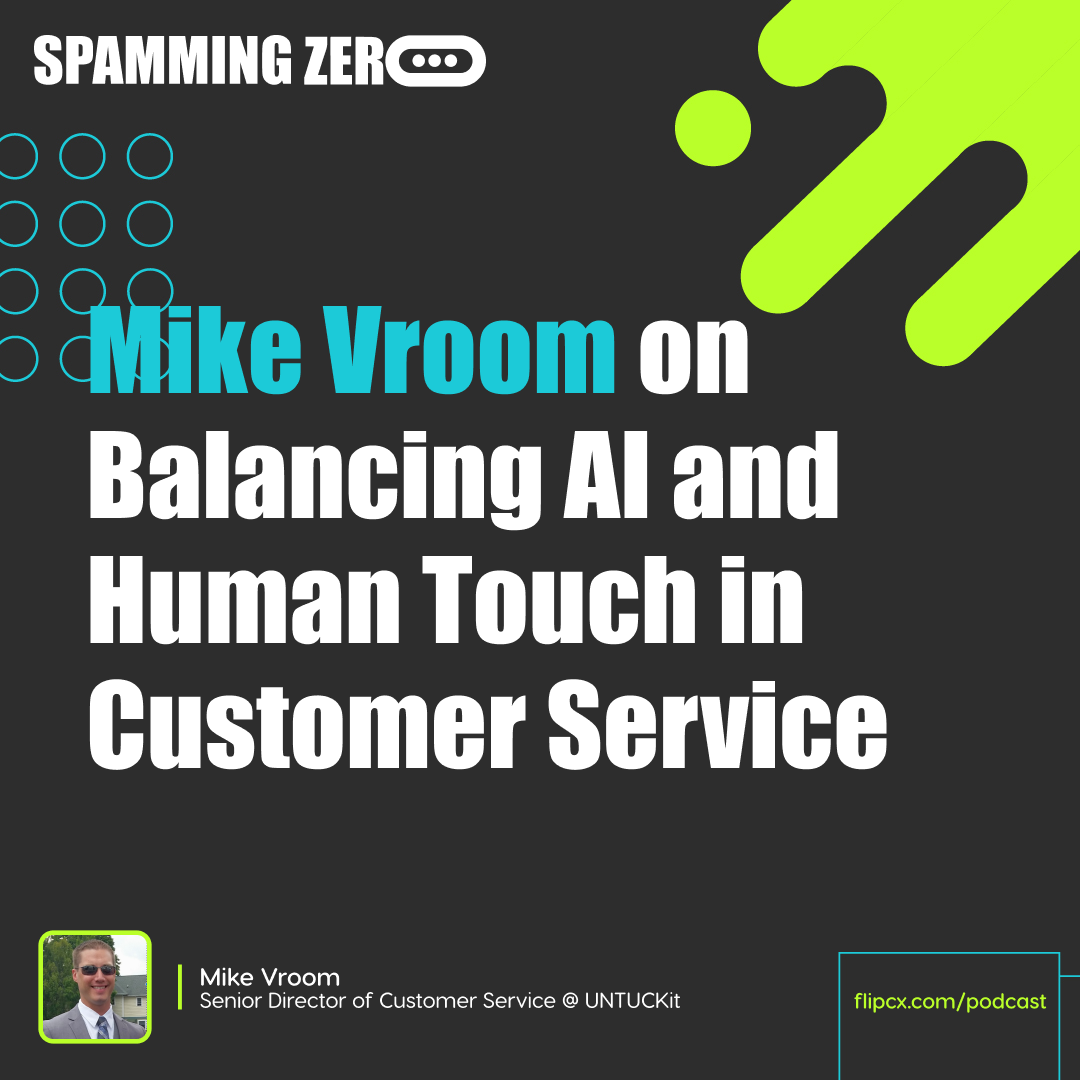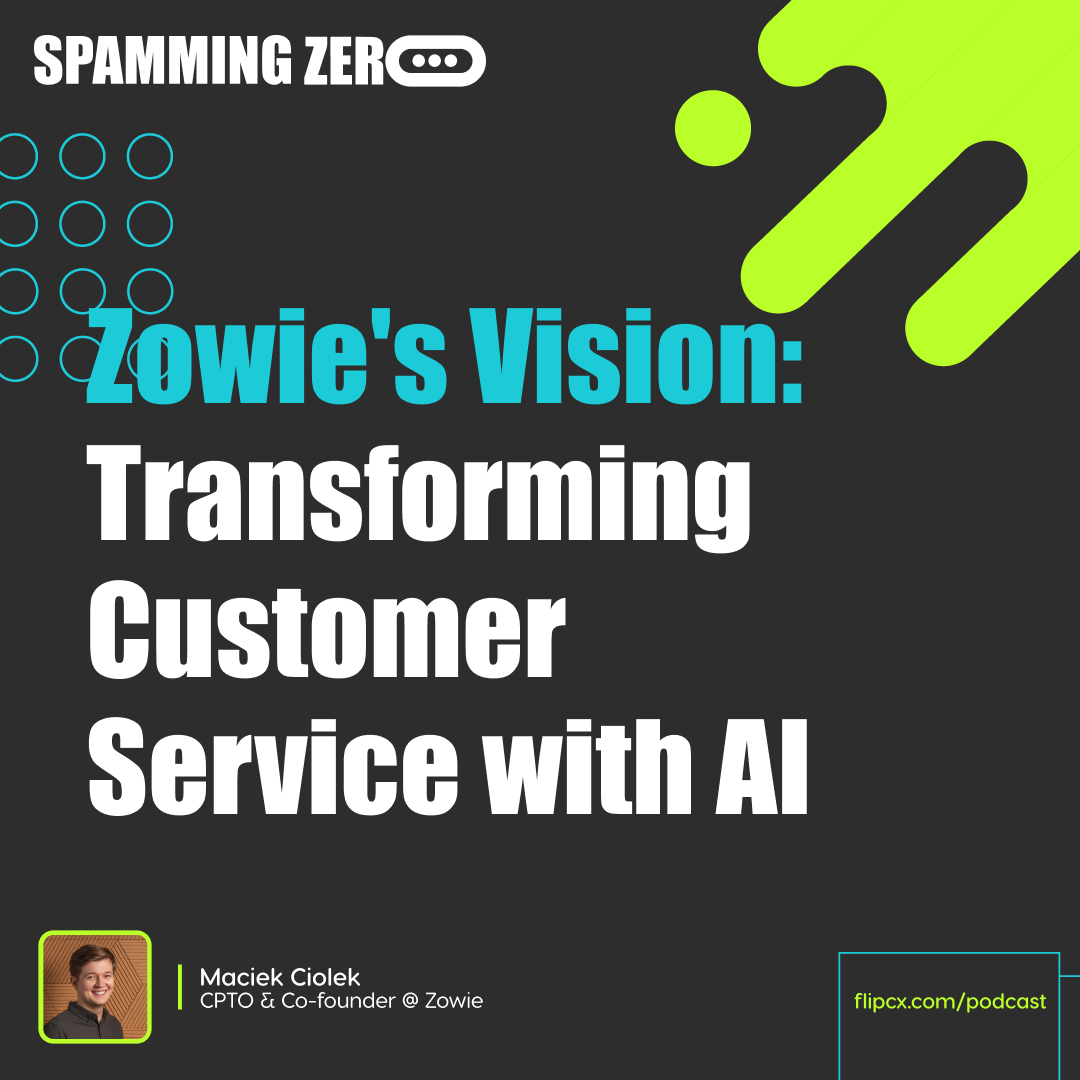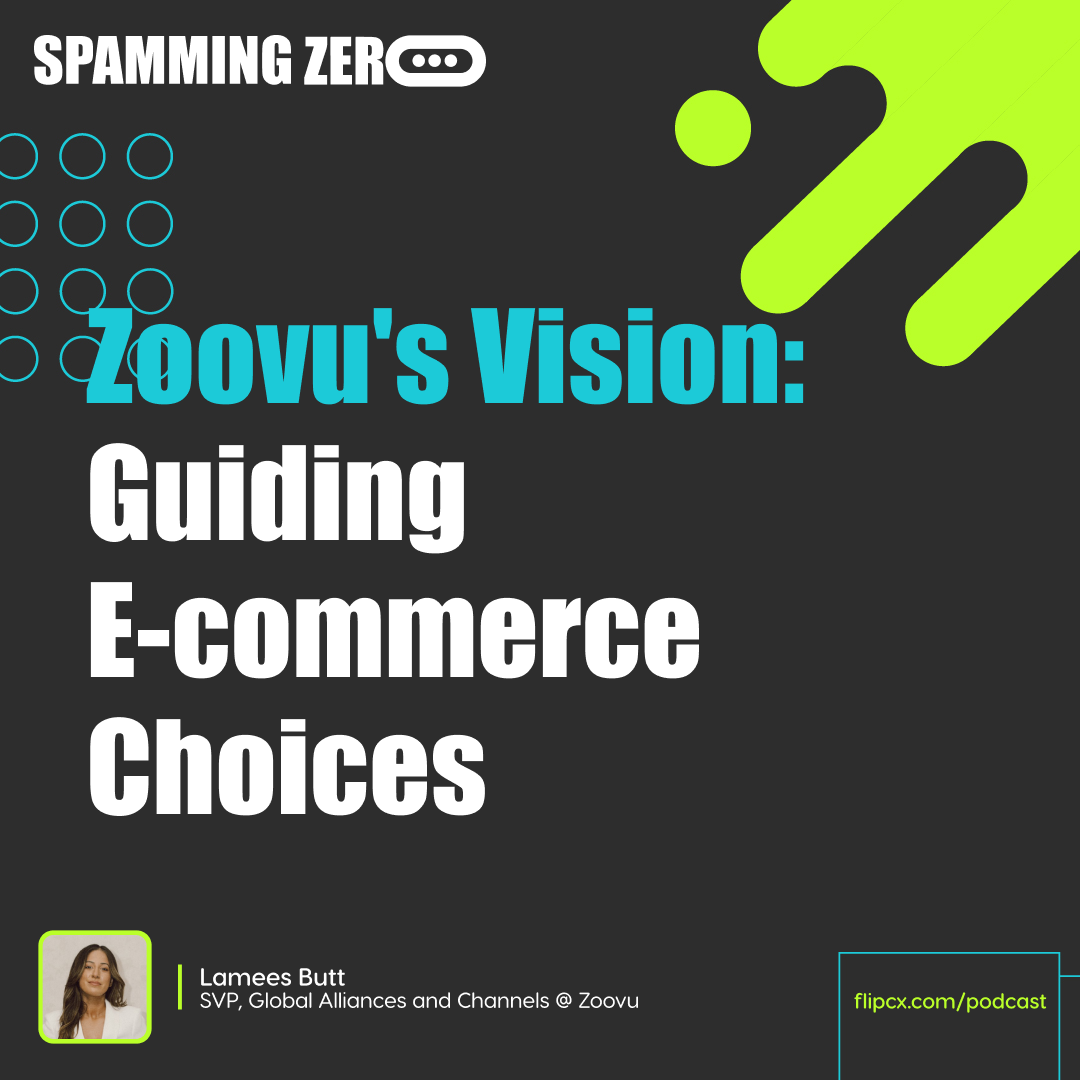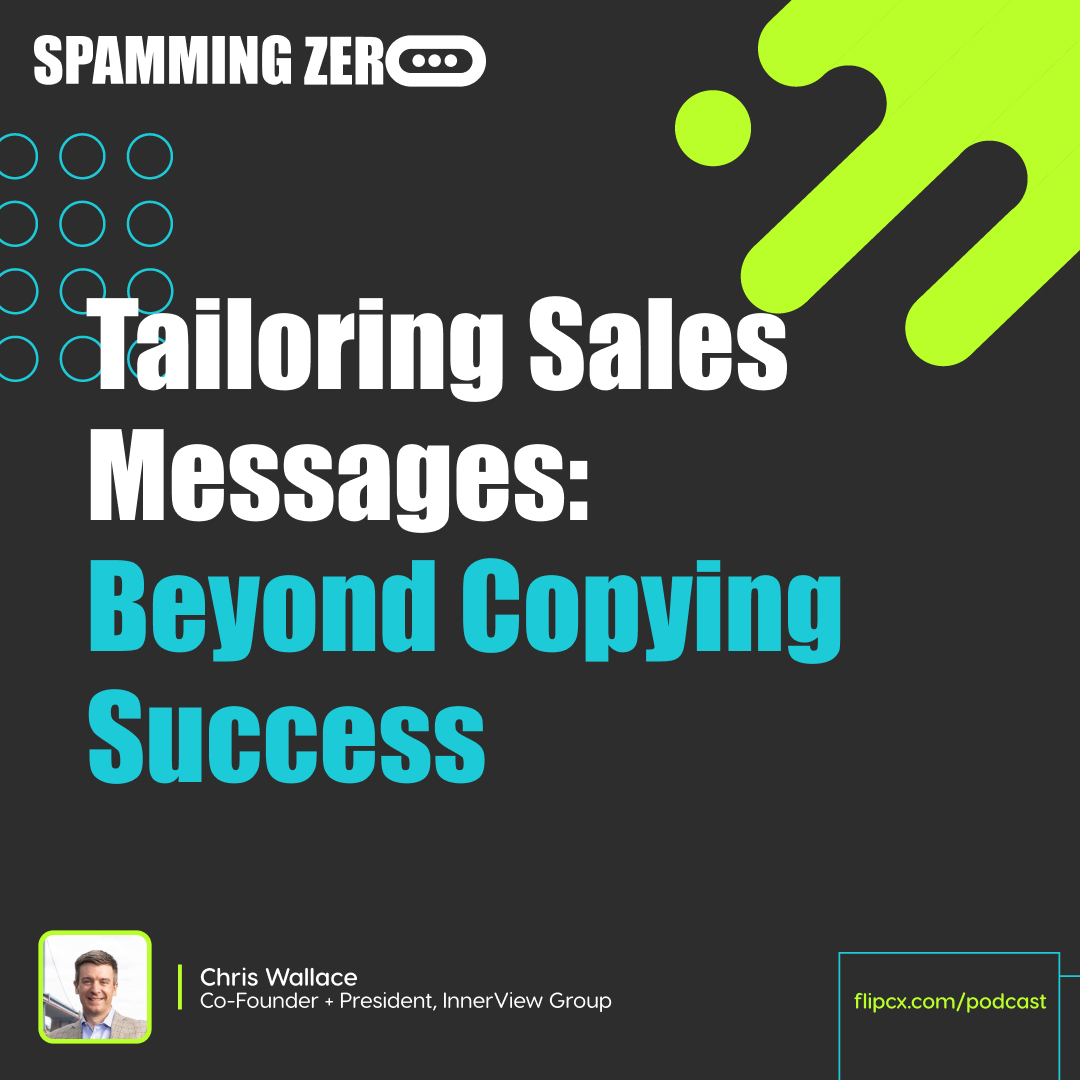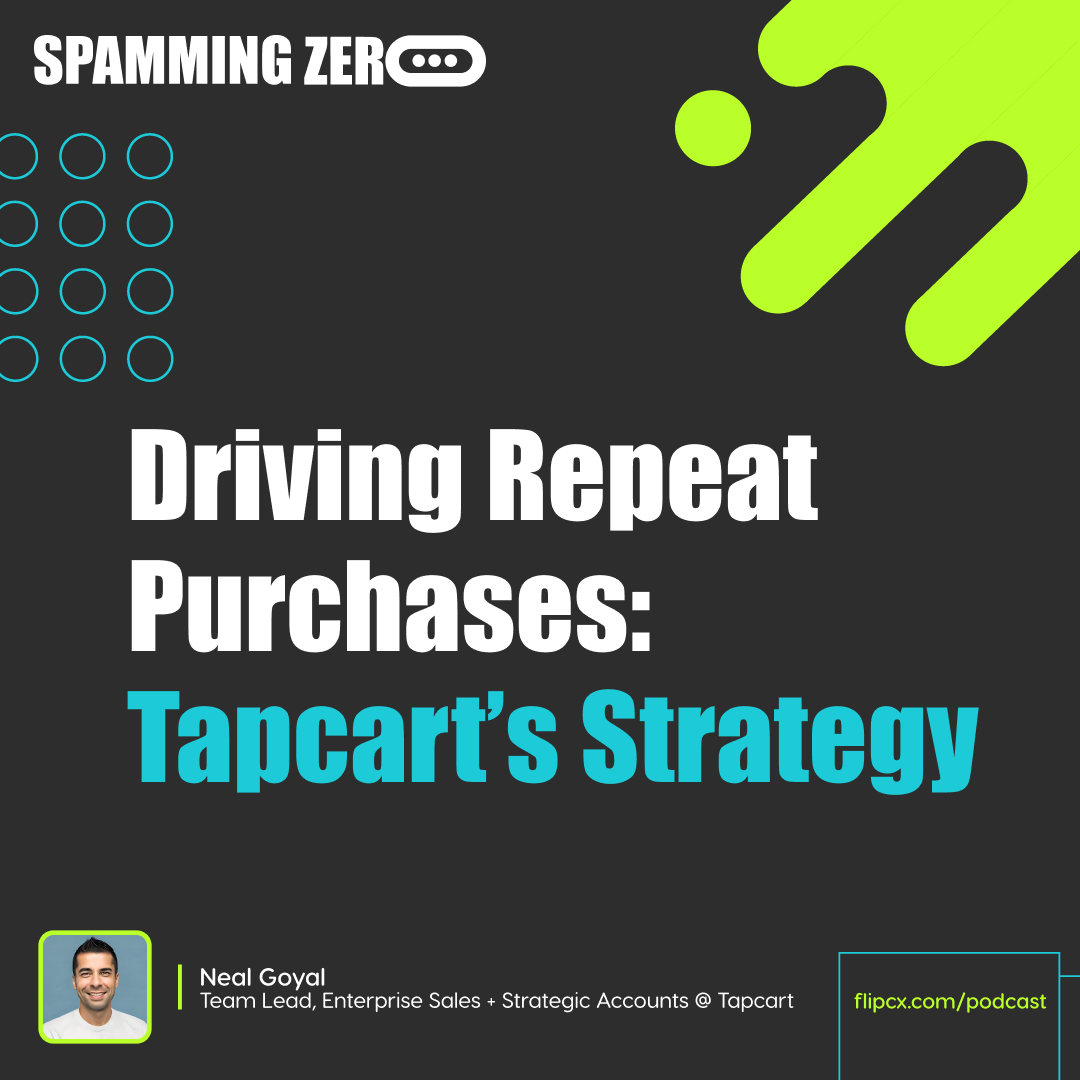Episode 44: Why Understanding & Utilizing Data Is Crucial For Your CX, with Sami Nuwar former Medallia Researcher
- 0.5
- 1
- 1.25
- 1.5
- 1.75
- 2
James Gilbert: This month's sponsor of the podcast, Spamming Zero is Kustomer with a K, K- U- S- T- O- M- E- R. com. Go check Kustomer out today, they're amazing. They are your top- rated CRM for customer service. Finally, a CRM meant for customer service. They deliver fast, rich experiences to your customers with omnichannel messaging, a unified customer view and AI powered automations like their AI chat, which comes with their products, go check them out. They offer a free trial. They also have a slew of CX tools for customer experience professionals like yourself that you can use as well. And on top of that, they have brands like Glossier, Rappi, SKIMS, Ring, Hopper, and UNTUCKit all on their brand using their products. They offer different types of solutions like self- service, Artificial Intelligence, of course, the CRM for customer service and just customer service in general. So they actually can provide help desk features as well. Go check them out, they're amazing and they're specifically meant for you. That's customer with a K, K- U- S- T- O- M- E- R.com. I'm James.
Brian: And I'm Brian.
James Gilbert: And this is Spamming Zero. What's up everybody? Welcome to Spamming Zero. I'm your host, James Gilbert. I am excited because we are joined by Sami Nuwar. Welcome to the show, Sami.
Sami Nuwar: Thanks for having me.
James Gilbert: Sami, give the listeners a little bit of your background.
Sami Nuwar: Yeah, I started out as a researcher a long time ago before customer experience became a thing, doing market research, getting data, reporting the news, writing reports. Similar to college work, except I got paid to do it. And then I graduated to a customer research and I found that to be more fulfilling, more fun, and then delved into process improvement, Lean Six Sigma, got a black belt, all that stuff. I thought that that was a lot of fun, great learning experience, and then eventually married both disciplines, the process improvement, lean world, holistic thinking, systems thinking and customer research so that we can gather the data, report the news. But do that for our purpose and the purpose being make the business better than it is, make it better today than it was yesterday, and then enrich the experiences and the lives of the customers that you serve. So that's my background and it's kind of researchy, kind of process improvementy, but I like to call myself a jack of all trades, kind of a chameleon.
James Gilbert: I love it. This is true story. When I was a young lad growing up and I started hearing people talk about the Black Belt Six Sigma, I actually genuinely thought it was a form of martial arts. No kidding, seriously, I was convinced that there was all these business people doing martial arts. That is not why we're here to talk about martial arts. I mean, maybe, I don't know. I mean-
Sami Nuwar: You never know.
James Gilbert: Do you do martial arts, Sami?
Sami Nuwar: A long time ago, I do have a red belt with two black stripes, a second degree red belt. So one degree away from black belt in Taekwondo. But don't ask me to do any of that now because it would be really embarrassing.
James Gilbert: Don't mess with Sami. That's all I got to say.
Sami Nuwar: These days, I wear a leather belt.
James Gilbert: All right. So Sami, you previously worked at Medallia. For all of our listeners out there, if you're not familiar with Medallia, I might be surprised by that. But just in case if you're not, they are one of the leading customer experience platforms that are out there, one of the pioneers that started doing surveys, for example, and a lot of the research data as it relates to customer experience. Sami worked there on the research stuff. Before I ask you the big question, I'd love for you to talk a little bit about what were your biggest learnings just about customer experience in general when you're doing research and you're focused on the data side of house with a big company like Medallia, who has access to all this information across so many different industries and organizations?
Sami Nuwar: Oh, man. One of the biggest... So I was a customer for a long time as well as a user became a before I became a medallion. But I would say that the biggest thing that I picked up while I was there in talking with clients was that, I mean, there's an immense amount of data and information. So data is information, it's data that we can use. It's contextual and there's an immense amount of it, but so many times I encountered clients that were paralyzed by it. The good news is it's in real time, the bad news is it's in real time. And what that really means is congratulations, we're gathering the data reporting, we're reporting the feedback in real time, but that also requires you to do something about it. Don't just report the news. It's not good enough to just report the news and don't just look at the data for the sake of looking at data with pie charts and bar charts and Pareto charts and all that stuff. You've got to be able to do something with it. It's got to be contextual to the business and down to the user that's looking at the data in whatever role that they're in. If they're a CMO or if they're a COO or if they're a director or a manager or someone on the front line, it's got to be relevant to them. And there's so many times where we did a great job of delivering that information and making it democratized so that anybody could see it whenever they felt like it. But a lot of times those clients that I worked with were like, " Sam, this is great. It's available on my phone, but what am I supposed to do with this?"
James Gilbert: The actionable side of the house, it's like...
Sami Nuwar: Yeah, what's the action?
James Gilbert: So 2014, 2015, as a CMO at a young startup, and we were competing with Medallia actually as a customer experience platform. And I remember the fascination around all of these platforms. There was the Qualtrics, Medallia, Satmetrix, those are the three big ones. And I remember so many people talking about, I mean, they're providing all this survey data, but it's not actionable. So we started this big trend with our product at the time where we're like, okay, well, everything that we do has to provide an action and in the reporting, so we have these next best recommendation actions that you could take. And it was kind of like the AI of CX a little bit built in there, which was kind of cool. It was kind of ahead of its time, I think. I think that's one of the reasons why Cisco really wanted it. So they ended up buying the whole thing, and that was a good outcome for many of us that worked there. But I'm with you a 100% because I've been in the data world pretty much my whole career before I became a CMO. That's actually what helped build my career into being a CMO today, was that data side of the house. And it's always fascinating to me to hear others talk about this because creating action with data is much more difficult than people realize. So from your perspective, you actually got to take some of this data and you got to give recommendations to your team internally on things that needed to change. And I'm curious, what is your approach and what would you give advice to others that need to create action with their data?
Sami Nuwar: Anytime you analyze large amounts of data, and hopefully your platform is helping you to categorize it and look for patterns, but as you look for those patterns, I have this visual image, this image of Inspector Clouseau. It's an investigation. So you've got your magnifying glass and you're looking at the data and it's never going to tell you what to do. It's going to point you in a direction. And text analytics is a great example of a great tool. It's a great technology. Everybody's got a flavor of it, but it's never going to give you the answer to everything you need. It's only going to point you in a direction. And as you investigate and you spot some patterns, you might want to double click on a pattern to see where it takes you, and it's never going to jump out and say, oh, yes, you need to add a slot to the buffet line. That's going to improve the experience. It's not going to tell you that stuff. It's going to point you in a direction that says they tend to be less satisfied when they go through the buffet line at this point in time during the day, and it's these demographics. And so, let's double click on the time of day for the store that you're looking at, or let's double click on the demographic to see what they're thinking, what they're saying. So it's going to give you pointers on what to look at and maybe investigate further. And that's the approach that I like to take whenever I spoke with clients and gave them advice on how to analyze this massive amount of data, take the time to look at it in layers, like layers of a wedding cake. Start at the high level, get the big number, and then drill down from that big number to some part of the business that you care about the most and see what the data's telling you. And then double click on a couple of areas if you spot some patterns and see what the data tells you there, and it's going to point you in the direction. Eventually, it's going to get you closer to the answer. It's never going to give you the answer, but it'll get you closer to it so that you feel a little bit more comfortable. It's not as much of a guessing game. You still might have to take an educated guess on a decision you need to make. But at least it's an educated guess as opposed to completely blind faith, and that's what data's supposed to do for you.
James Gilbert: If you don't mind, I'd like to take a little minute or two to give some examples of this.
Sami Nuwar: Yeah, sure.
James Gilbert: I think one of the most relatable examples that I can give, and I say relatable because I think it's one of the most common things that people in the business world try to look at. I'm going to use marketing as an example. Now, at the highest level, you're measured as a CMO or a leader of marketing. You're measured by market share, growth rate, CAC, all these KPIs that are very unique to business growth, CAC to LTV ratio, all those things. But at the highest level, it's how much pipeline is created by marketing and how much revenue is produced by that pipeline that was created. Ultimately, those are the two big measures. Now, if all we do is look at how much pipeline was created and how much revenue was created, we're actually not going to know which channels we should invest in. So this is a perfect example of how we have to dive a layer deeper. Now we have to get into the attribution. We have to look at, all right, which channels are driving that pipeline, which channels are converting that pipeline? And then what are we doing in the sell cycle to actually convert the pipeline into closed revenue? And most people can understand these concepts. This gives us a better layer in knowing, all right, well, as a CMO, I can go back to that data and I can say, all right, we need to adjust X and we need to ramp up Y because it's going to likely yield a better result for us. And so, often people stay at this high level and they don't dive deeper. And ultimately, if you're a young startup for example, and you're not looking at those dive deeps right of the data, it's going to be really tough to know, hey, this is where I need to improve. Or you could be thinking that you're doing the right thing and it actually could be the wrong thing and you may not find out for six months because you're not diving deeper in the data. So there's always this healthy balance of, analysis paralysis is what it's called, like measuring too much. But I think there's a healthy measure of you need to understand that there's reasons why you need to dive deeper for your own function and customer experience professionals have to do the same thing. What you're presenting to your executives and your board and even the rest of your C- suite function is not the layer that you need to stay focused on. It needs to be deeper because you are ultimately going to have to make the call, I'm like, " Well, maybe I need to get rid of a piece of technology that's costing us a ton. We need to implement something different." And another good example of this, I'll use Flip as an example. We just rolled out a new dashboard and analytics part of our product. It's like an amplified version of it. And we just had a customer call just yesterday actually, and we were telling him about it, and I was talking to him a little bit about it. And he pulls up the dashboard in the portal and he's like, " Man, this is great. I'm so glad I have access to this data, but how can I make sense of it?" So I also think that there's a layer of education that needs to happen with the data. You may not always know what you're looking at, but you can certainly have people stay focused on educating others around that so that you can make sense of it. And those are your data scientists, those are your researchers like yourself. Those are your ops people that can actually make sense of the data and give you recommendations as well. So think that's why we're seeing the ops function in businesses skyrocket as well.
Sami Nuwar: I've seen that too. Back to your examples, the thought that comes to mind immediately is, it's the concept of inputs and outputs. There's the function Y equals F of X, that's the generic function. Y equals F of X, Y being the intended output that we want to look at or the result that you want to achieve. And so, why if is the output that I intend to achieve, then the question I need to ask myself is what are the inputs that make this output what it is? And so, if you start at that high level, that top level part of the pyramid that we tend to look at, that's your Y, that's the I would like to have an influence on CAC. Okay, so what makes CAC happen? Is it blind faith? Is it the temperature or is it something in the business or some behavior, either behavior, process or technology or combination of all the above that makes this happen? And what are those drivers and what are they looking at? What are they looking like in terms of the data? So diving deeper helps you get there. It's just that I think sometimes in some cases, businesses forget those facts that the overall Y metric is driven by a bunch of inputs and it's understanding which inputs are driving it. And there are probably some inputs that drive it more than others. And so, what are the patterns happening there? And that's what we need to look at. And in so many cases, lots of programs use a beacon metric and it's perfectly fine to have that North Star indicator that tells you whether you're going in a certain direction. Are we going the right direction or the wrong direction, or do we just need to keep plowing forward? The beacon metric is supposed to do that at the brand level, at the company level, and that's where executives tend to focus on. But we as practitioners, as researchers or operations people, we need to be able to connect that beacon metric to the things that make that beacon metric move up or down and to tell you whether you're going in the right direction or not. The programs that succeed are able to do that. They're able to do that from multiple perspectives, not just from the client point of view, which is where your feedback comes at, but also from the business point of view. And are the business indicators lining up with what customers perceive? And there may be a gap in time in that perception, and so depending on the business that you're in and whatever products you're selling. So there may be a delay in what they perceive from when you operate certain things, but there should be both sides of that coin, is the customer's point of view and the business' point of view. And then one thing that I have seen lately is, and I think it's gaining some traction, but it's still kind of an unknown to many, is there's a company in Europe that I noticed that's doing this thing called process mining. Essentially what they're doing is they're keeping tabs on how they operate on behalf of their clients. They're so good at keeping tabs of their own operation that they're essentially leveraging their own data. They have mountains of data like most companies do, but they just happen to do a really good job of keeping track of how they work, how often they work, who's doing what, so that they're able to still do their traditional surveys. But they don't rely just on those as their indicators of whether they're succeeding or not. They look at how the business operates deep within their data to understand how can we be more or less efficient in any one area. Let's take a look at that. So I think process mining is probably maybe the next frontier that nobody's talking about.
James Gilbert: That's a really good point. From my experience too, there's so many organizations that struggle just architecting the data to even get to that high level view. And then to dive deeper, the architecture of the data is not in place. But by identifying what your North Star metric is, you can work backwards from that. And that's what can actually help you architect your data model. I hate to keep using marketing as an example here, but sometimes the funnel is one of the easiest ways for people to grasp the visual of this. If you work backwards from the total amount of deals that you need to have in a year to hit your goal, okay, that's your North Star, we need X amount of deals. And you look at just best practices on a close rate of a conversion, let's say it's 30%, which is pretty standard across most industries. So then you take that number and you do backwards funnel progression, and you basically say, all right, now we're going to divide the total number that we have and we're going to divide it by the 30%, and that's going to give us how many of the next phase of the funnel we're going to need. And then we're going to take the next conversion, we're going to divide that number by... And then we're going to keep going up until we reach the top of the funnel. And that top of funnel is then going to tell us, all right, well, we have to have this many people visit our website. We have to convert on it at 3, 4%, and then from there we have to convert leads and MQL and the whole nine, right? And I think a lot of businesses can do the same thing. You can look at subscribers. If you're in the direct to consumer world, look at subscribers, look at how many net new customers you have, how much you're converting those on the website, and then you can dive deeper into the channels that are driving those things. Like with paid media, is it your social media? A lot of direct to consumer businesses have an e- commerce store directly in their social media platforms. That's probably what's driving a lot of your traffic. Are you converting those? I think there's so many different ways you can go about this. And architecting the data can sometimes be difficult because people are thinking, well, how should I model it? And I just want to make sure everyone hears this part. There is no such thing as one size fits all. You must architect the data so that it is the best model for your business. And I got news for you, just because you're a direct- to- consumer business does not mean that the model is right for you if another direct- to- consumer business is using that model. It definitely could be, but you have to decide that for yourself. You have to decide if this is going to help you measure the things that you need to measure. And I think that that's another big mistake that people make with data. I want to ask you, right now when you look at all of your experience that you've had, and maybe it's related to what we're talking about right now, but what's your hot take? What's something that you fundamentally believe that you think a lot of others would be like? Sami, I don't know.
Sami Nuwar: What a provocative question. It's kind of related. It's going to make me sound like a Luddite. I'm not a Luddite. I use technology like everybody else does, but I'm not big on AI. I do believe it is going to help us, but I don't believe it's going to be this silver bullet for businesses the way it's being pushed as and talked about a lot. And I know it's crazy talking about it now because we can't get away from the ChatGPT discussion and the being in all that stuff. And it's like, oh God, are we a stone throw away from the Terminator and Skynet? Is it going to be like that or is it going to be like the Jetsons? They're going to do everything for us? Can we stop bullshitting ourselves? I mean, I think it's a good thing. I think AI is going to help us. It's going to help people make better decisions and we can do things a little bit better, more efficiently, repetitive tasks. Yes, but is it the ultimate answer? Is it so advanced that it's going to think for us? No, it's not and it ever will be. There are certain professions that may be threatened at some point, but I do think that those of us that are in a knowledge work space, there's still a place for us. Humans will still be needed.
James Gilbert: I couldn't agree more. I think this has probably actually been the most common hot take that we've had on the podcast this year is this. And I say the same thing anytime I ever hear it. And that's there is no such thing that technology itself can do the things that humans can. Now, technology can certainly be faster at computing things, sure. It can certainly be faster at maybe even finding data, sure. But what it cannot do is it cannot take the human aspect of comprehension, creativeness and mash it together. It can certainly get somewhat close. Sami, what if I were to tell you that I could deep fake myself? It would sound like my voice and my own facial expressions if I gave it enough stuff and it could deep fake me, right?
Sami Nuwar: Yeah.
James Gilbert: Sure, that can happen, but there's ethics behind that stuff as well. So you have to remember that it will never replace humans, it just won't. I don't believe that it will. I don't believe it's going to get so crazy to where people are going to not have jobs. Though, to relate to your hot topic, I certainly think that people in certain roles should adopt it, helping them be more efficient and better at what they do.
Sami Nuwar: Yeah, I agree. So you talked about it can definitely compute things. The calculating massive amounts of data to arrive at an answer. It can do that at scale, that we can never do millions, trillions, billion, massive amount of data to arrive at some conclusion. We'll never be able to beat that ability. I think there are certain functions in which it will succeed in that, in which it will help us. It'll augment what we want to achieve. Something that requires repetitive thinking, repetitive action, ingesting massive amounts of information to arrive at a conclusion to take it to the next step. AI is definitely better equipped at doing that kind of work. It can help us make decisions, but it won't make decisions for us. We can arrive at the decision with some higher level of confidence with less effort through the help of natural language processing and AI and other mechanisms. So text analytics is a common tool used in feedback, data collection and CX in a customer experience space. But it's too often and machine learning is the other term that's always thrown around. It's like, yes, it could teach itself, it's amazing. And I'll be like, it could teach itself, but you still have to give it pointers. You still have to structure it.
James Gilbert: You still have to give it the inputs.
Sami Nuwar: Yeah, it's not going to like miraculously, oh yes, I can teach myself. It doesn't work that way. You still have to give it something to work with and it's never going to get you to the answers. It's going to point you in the right direction just like an investigation would've done if you analyze things manually. Now, what you're able to do with some platform that has that baked into it is you can do it at scale. You can do that same investigative work, but you're doing it at scale and you're arriving to the conclusion in a much quicker timeframe with a greater sense of confidence than you were to do it if you were to just do it manually. But it still requires that human decision making aspect that is never really going to go away. And even in repetitive functions, let's say in a customer care environment where you have inbound calls coming in, we can have technology there to help us ingest that information and categorize it and even interact with those callers calling in. But I think where it tends to fail is when those interactions are too robotic. It's like the human aspect, it isn't felt by the caller. And even if it's approximating the human aspect to the point where it's so advanced, it seems completely human and you're not really sure if it's really a person or a robot, if it really is a robot and the person on the other end suspects it to be a robot, but it feels so human, it almost feels disingenuous like you're trying to fool me.
James Gilbert: So here at Flip, we have customers that purposefully do not want it. Our product is voice like you're talking about, and they purposefully do not want it to sound too human for that very reason. We actually tested this a little bit with some early customers where they had a pretty... You could not tell, and it actually had a more negative impact with their customers. And so-
Sami Nuwar: It was so human that people didn't like it?
James Gilbert: Yeah, and people don't like it. And the reason why is because then... So I think there's a nice bridge here, automation and AI in most channels, it's meant to serve some more of the repetitive tasks and things that are a little bit more simple to handle. And then we as consumers and customers fully expect there to be, " Hey, if I need a more complex solution or I have a really complex problem and I need to talk about it in a little bit more detail, we absolutely should provide the opportunity to engage with the human." And this is again, where AI is never going to be able to touch this. There's too many inputs that would have to come into it for it to make sense. And then there would have to be commonality. And the fact is, a single customer coming in with a very complex issue, there may not be another customer that comes in with that same complex issue ever, but a human is only able to handle that input and compute it because AI looks for different types of patterns to be able to make it common. And I think it's interesting because when I hear you talk about voice in particular, I think you're right. There have actually been a few times where I've been on the line with a brand that has had a very human- like voice, and I couldn't tell the difference. And I actually got really mad. I thought it was real. And so, I started asking questions that only a human could get and it didn't work. I think that there's definitely advances in this technology for sure, but I think it's fascinating. I love your hot take, I agree with it. What's your solution to this?
Sami Nuwar: Gosh, what's my solution? It's one thing to talk about the challenge, but what is the solution? Gosh, obviously, I don't have the ultimate solution. If I did, I'd be in Vegas. I think a solution, things that can help us overcome these challenges. I think you just mentioned one of them. There needs to be an off ramp. If I'm in this web, I'm talking to this thing, and I'm not sure if it's a robot or a person, I don't know, but at the end of the day, I've got a task. I need to accomplish something, and my time is precious to me and I'm tired of going back and forth through a menu system or trying to talk to this robot to try to get there. Can I just hit the easy button and get to a human? Or people always gravitate to the zero button on their phone. Can I just hit the zero button so I can actually speak to an agent?
James Gilbert: That's why we have the podcast. That's literally the name of it, Spamming Zero.
Sami Nuwar: You just hit the zero button. Can I just get to somebody who could help me and get this done quickly? And I think giving people that alternative, there has to be an off ramp so that they can get to it quickly. And can it be easy to get to? Is it as simple as hitting the zero button, or do I have to back out of the menu and go back to the previous menu with the options? I don't even remember, is it three or a zero? I don't know, but I'm going to just hit something. I'm just going to keep spamming zero until I get it. I don't know, I think that's a solution. It's not going to fix anything but, there's got to be an option for people to actually interact with a human as it fails safe, at least.
James Gilbert: What I am seeing is really three strong sentiments and segments that exist in the customer service and support world, just with inquiries in general. One, you have the people that genuinely would prefer a human, that's option one, that's preference one for them. But then you have another big segment of the population that prefers not to have a human and self- serve another big part of the population. And then I think you have a third, and that's that there's this other side of the population that wants both options. I want self- serve and to be able to talk to a human. But if automation can handle it, I'd rather avoid a human altogether. And I think that as direct to consumer brands, especially, maybe not so much B2B, but direct to consumer brands especially, really need to have options for all three of these just simply from the standpoint of it's a pretty massive part of the population. I think your millennials and even your boomers and the older generations are going to want a human no matter what. That's just the reality of it. I think you're going to have a newer generation that's coming up that really actually wants both options, but we prefer to not even talk to a human and being at all. That's how my kids are, " I don't want to talk to a human, dad," I don't even want to talk to the people at my work that I work with, you know what I mean? It's just wild to me that that's how they operate. But it is, I mean, they're growing up in worlds where how they primarily communicate is through an avatar and on social media and through their gaming platforms, and this is this generation growing up. And so, you're going to have a healthy part of the population that's going to need to be served in all three of those segments. And as brands that are trying to serve them, you really have to provide those three options. And I'm a big believer in that because there has been far too often where I myself, I kind of sit in the middle of these three segments because I'm like, man, sometimes I'm that person that hits zero right away. But other times I'm like, " Man, it's after hours. I know I'm probably not going to be able to get an agent, so let's self- serve." But then I go through the self- service options and I find out, " Oh, shoot, they don't have an option for me. Now I need to speak to a human, but it's after hours." Yeah, why can't automation take care of my problem? You know what I mean? So that's what I'm saying, that's the whole journey behind some of this that I think more people have to think about.
Sami Nuwar: Yeah, and I mean all of that and plus, what is the task to be done? What are those more common tasks that may not require as much as effort? So maybe understanding what those tasks are and providing some automation there to kind of fulfill the need without as much effort because they tend to be more repetitive. It's like, what's the status of my order and can I get the status without having to talk to somebody? So I think it would also vary on the type of task in the type of interaction you're aiming for.
James Gilbert: Completely agree. Sami, we are at time, but I always like to try to make my guests feel a little bit more personable when it comes to the listeners. So tell me about an experience that you've had with a brand that you feel like has just done it all right.
Sami Nuwar: Oh, man. I just had one yesterday and it's not high- tech. It doesn't have to be rocket science. It's common sense and just relating to the people that you do business with. So there's a company called Simply Organic that does lawn service. So we get our lawn service here by Simply Organic. And there's a person, Danielle, who is the person that services my area in my neighborhood and the surrounding neighborhoods. And so, she's been the same person for a couple of years. This is her job, and she makes it an effort. It may be a company thing, or maybe it's a Danielle thing, I don't know. I don't really care. All I know is that Danielle knows that I've got a dog who tends to be let out in the backyard and fenced in backyard every once in a while, especially in the mornings. And Danielle, she knows she's going to be making a rounds, and she sends me a text message letting me know, " Hey, I'm going to be in your neighborhood tomorrow. I'll probably hit your house around 8: 30, maybe 9 o'clock, give or take. Just wanted to give you a heads- up." Okay, cool. No problem. Well, so that's like clockwork. Danielle shows up usually 8: 30, 9 o'clock the day after she sends me that text message, except this past week she didn't show up. But before her scheduled time, she sent me a text message letting me know that, " Hey, I've got an abscess tooth. I got to go to the dentist right away, and I'm not going to make it to your house." No problem. I mean, take care of yourself, Daniel. I hope you get better. And sure enough, a couple of days later, she sends me a text message, " Hey, I took care of that thing and I'm going to be around your house. Sorry about the delay, but I'm going to be at your house tomorrow. Can you make sure the dog's not inside for two hours?" Or something like that? " Yeah, no problem. Danielle," I sent her a text message back, she said, " Thanks for your flexibility on this." She's thanking me. I thought that was a real personal experience. It didn't take much effort, and it's a level of consistency that I don't see too often from very many brands, whether it's B2C or B2B, it doesn't have to be perfect. It doesn't have to be rocket science. And when something goes wrong, acknowledge that something has gone wrong or hasn't gone to the expectation and make it your best effort to correct that expectation or reset the expectation. And that's everything Danielle did for me. She kept me informed, kept a regular cadence, and when there was an unanticipated interruption to the regular cadence, she just let me know. No problem.
James Gilbert: I love it. It's proactive too, which is a whole another topic that we could dive into. Sami, you've been amazing. Thank you so much for joining us on the show.
Sami Nuwar: Oh, thank you for having me. I appreciate it.
James Gilbert: Don't forget to subscribe to our podcast. Every single week, we're going to do a new episode, and we can be crazy and do extras, who knows? But you can find us every week here at Spamming Zero. Go to your Apple, your Spotify, wherever you will find your listening platform. We're even on IMDB, can you believe that? And go subscribe to us, give us a rating. We'd love to hear from you. If you reach out to me on LinkedIn and you want to have somebody on the show, or maybe you think there'd be a good guest, reach out to me. I'd love to hear from them.
DESCRIPTION
Data. Little word, huge possibilities.
So, it’s surprising that so many orgs are still somewhat stumped as to the best ways to utilize it. Particularly when it comes to CX.
It’s something that data expert Sami Nuwar has noticed throughout his impressive career, and he shares some fantastic solutions - this week, on Spamming Zero.
What’s Covered?
- Some of Sami’s biggest learnings from his time at Medallia
- Top tips to create action with your data
- Diving deeper into the education factor
- Sami’s hot take around AI
- Personal experience that wowed our data expert
- And more
Ready for more fantastic Spamming Zero conversations ahead? Listen, rate, and subscribe on YouTube, Casted, Apple Podcast, or Google podcasts.
Today's Host
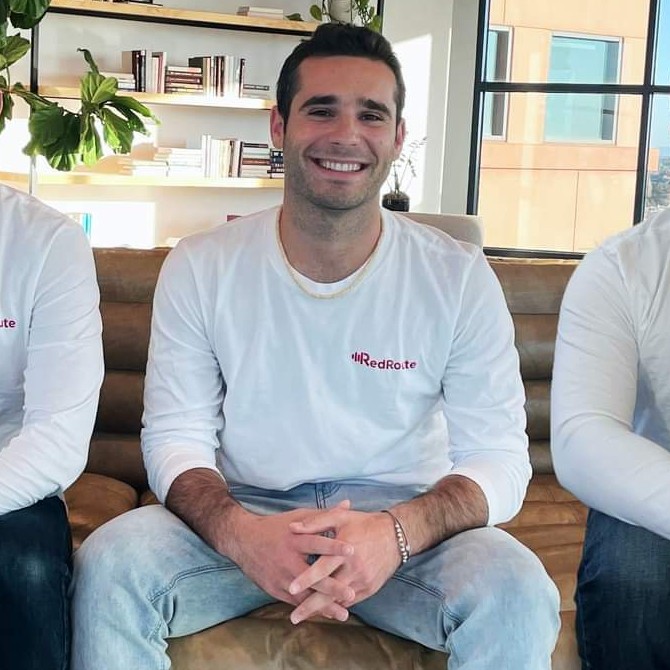
Brian Schiff
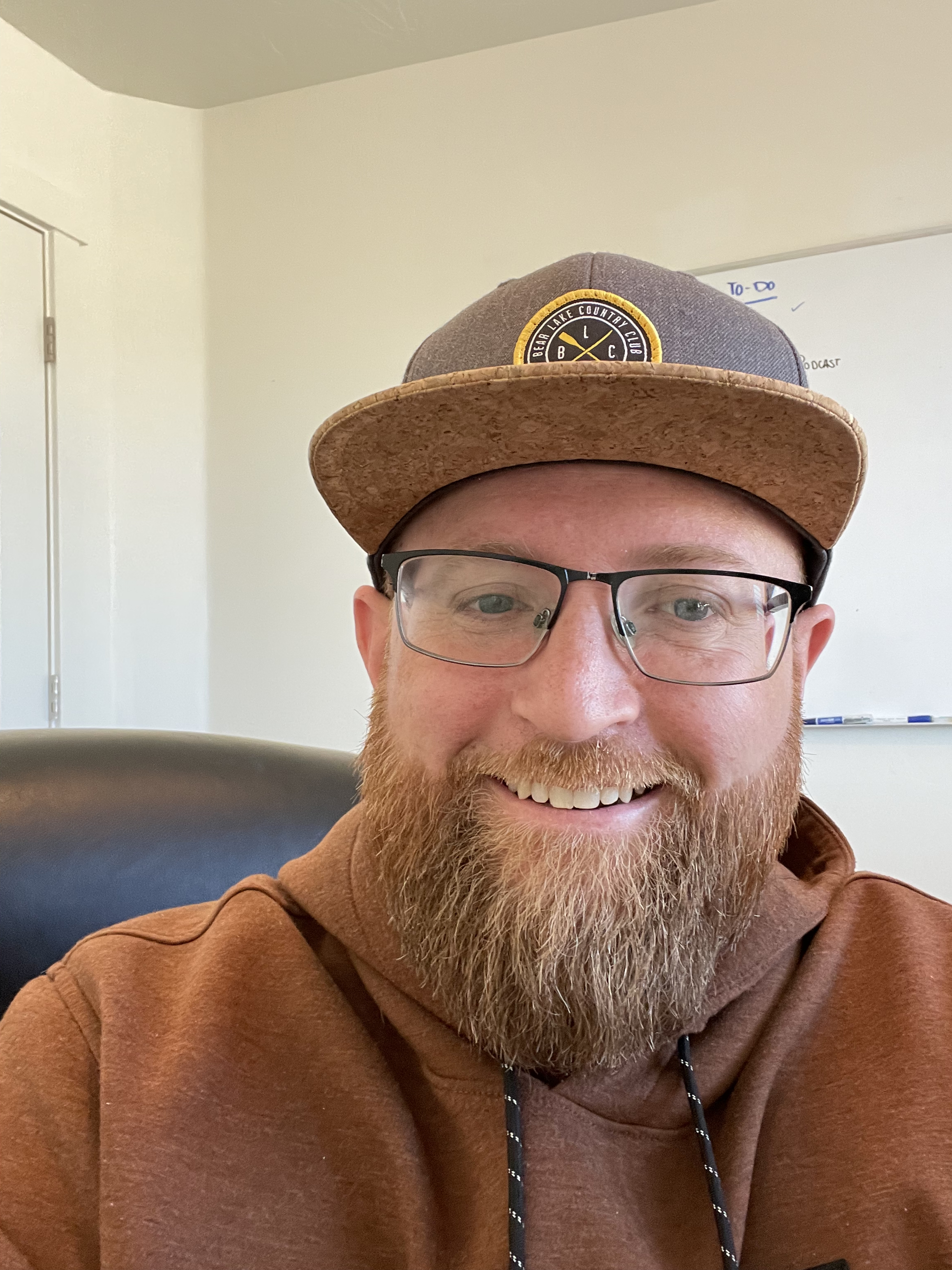
James Gilbert
Today's Guests

